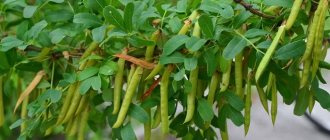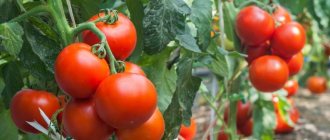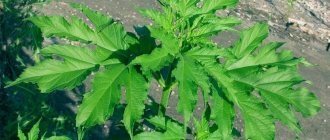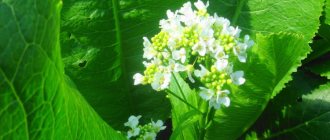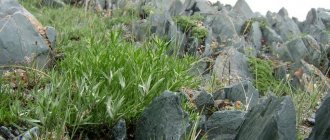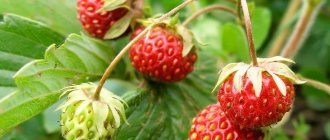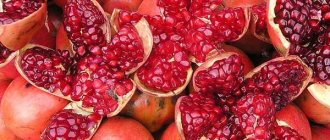Everyone knows vegetables such as potatoes, tomatoes, peppers and eggplants, but not everyone knows that they belong to the Solanaceae family. It is quite difficult to compile a list of nightshade vegetables, since it will include more than 2,500 different plants growing all over the world.
For those who are interested in which vegetables are classified as Nightshades, it will be useful to familiarize yourself with the most common crops.
Some representatives of the Solanaceae family are known to everyone
Potato
Potatoes are one of the most popular representatives of the Nightshade vegetables. In Russia, this is the most important food crop, which, in addition to food, is also used in other industries, for example, in the chemical or textile industries.
Potatoes are an annual, tuberous crop, propagated vegetatively. The plant is a small bush that forms from 5 to 15 tubers in the soil, depending on the variety.
Planting a cutting in a potato tuber
Being a moisture- and light-loving plant, potatoes stop growing when the air temperature drops to +5 degrees or rises above +35 degrees. All varieties of this variety are divided into table and universal. The culture contains a fairly large amount of starch - from 10 to 16%.
Composition and application
The chemical composition and nutritional properties of potatoes vary greatly depending on the variety. However, one of the most important characteristics of the product is the content of starch, the main nutrient of tubers, the amount of which in various types ranges from 12 to 22%. Potato nutrients are mainly represented by carbohydrates in the form of starch (on average about 15-16%), sugar and proteins (2 each), pectin, vitamins and mineral elements (potassium, iodine, magnesium, iron and many others). Tubers are rich in fiber, vitamins A, B2, B6 and C.
The benefits of potatoes for human health have been noted more than once. The product is a source of ascorbic acid, which strengthens the immune system, copper, which lowers blood sugar levels, and potassium, which stimulates the functioning of the heart muscle. Potatoes help with gastritis, peptic ulcers, strengthen the walls of blood vessels and improve metabolism. Folic acid in its composition supports the functioning of the thyroid gland.
However, under no circumstances should you eat green fruits - they contain nitrates, as well as solanine, which is poisonous and extremely dangerous to health. Potatoes are also contraindicated for people suffering from diabetes and obesity, as they have a high glycemic index, affecting blood sugar. Fried potatoes and french fries are not recommended for consumption.
The use of potatoes is widespread in folk medicine. The plant is used in various ways to treat coughs and colds. Gastritis and peptic ulcers are treated with potato juice, which is also used for inflammation of the pancreas. Recipes for potato compresses for joints, varicose veins and pigmentation are common. The benefits of eating potatoes for heart disease have been noted.
The properties of potatoes and their characteristics vary greatly depending on the variety and type of plant. Firstly, it is important to distinguish potato varieties by application:
- table varieties are convenient for cultivation on plots and subsequent consumption;
- technical grades are used as raw materials for the industrial extraction of starch, the production of alcohol and other products;
- feed is used as food for livestock;
- universal ones are an intermediate option.
There is a classification of potatoes according to their ripening period: early varieties (ripen after 50-60 days), mid-ripening (from 80 to 100 days) and late varieties (from 100 to 120 days). Whether a potato belongs to a particular variety affects its biological requirements during cultivation, storage ability, appearance and taste characteristics. The most popular varieties in Russia are Adretta, Gala, Zhukovsky early, Red Scarlett and Rosara.
Prices for potato seeds in Moscow vary from 125 rubles/kg for the most common varieties (such as Golubizna, Vympel, Velikan and Nikulsky) to 380-400 rubles/kg for elite varieties.
Eggplant
Solanaceae family - characteristics of nightshades
Although eggplant is a perennial crop, in Russian conditions it is cultivated as an annual crop. The stem of the plant is initially herbaceous, but from 50 days of age it begins to become woody. The color of the nodes and stems is predominantly green, only pale purple or dark purple in the upper part. The stem of the plant branches and can grow up to 125 centimeters, depending on the variety. Eggplant leaves are quite large, can grow up to 35 cm in length, and are ovoid in shape. The plant blooms with large single or curled flowers of light purple or dark purple color.
The eggplant fruit is a multi-chambered berry about 15 cm long. The weight of the fruit can vary from 50 g to 2 kg. The color of ripe fruits is dark purple or light purple. Eggplants find the widest use in cooking: all kinds of dishes are prepared from them and canned for the winter.
Poisonous medicinal plants
Poisonous nightshade crops are used in medicine, but in very small doses. Eating the fruits and berries of these plants causes poisoning and death. Many of them are weeds that grow near houses: in vegetable gardens, vacant lots. One of the most powerful poisonous plants is belladonna (belladonna). All parts of it are poisonous, and eating even 3 berries causes respiratory arrest.
Belladonna (belladonna)
A perennial herbaceous shrub with a height of 50 cm to 1.5 m. It is a medicinal plant. Most often found in open forests, on the edges, along the banks of reservoirs, along forest roads. It has a lignified branched stem, abundantly covered with foliage, a powerful root, dark purple bell-shaped flowers, oblong leaves, pointed at the ends.
Ripe fruits are shiny, black in color, and have a sweet taste. The plant is highly poisonous. All parts of it contain poison. There is especially a lot of it in berries. For a fatal outcome, children only need to consume 3-5 berries, adults - 9-11 berries. The plant is listed in the Red Book of the Russian Federation, Azerbaijan and Ukraine.
Nightshade bittersweet (wolfberry)
Perennial herbaceous shrub (height 30 cm - 2 m). The stems are creeping or spiral-shaped, the leaves are oval, pointed. The fruit is a bright red berry, sweet with a bitter aftertaste.
An infusion of this plant is used by gardeners and flower growers to kill pests. It is not used in traditional medicine, but is successfully used in folk medicine to prepare ointments, decoctions and infusions.
Dangerous henbane
Herbaceous biennial plant, 20−110 cm in height. It has a straight, strong stem covered with hairs and soft, downy leaves. The flowers are pale yellow with dark veins. The capsule fruit has the shape of a jug. Each box can contain more than 500 seeds.
Tomato
Another well-known vegetable representative of the Solanaceae family is the tomato. Previously, it was believed that this vegetable was harmful and caused exceptional harm to the body. Today, tomatoes are actively used in cooking, they make preparations and prepare all kinds of fresh salads with them. The plant is native to South America. Because these vegetables from the Nightshade family are universally recognized as healthy and tasty, they have spread throughout the world.
Aktara for indoor plants: instructions and methods of growing
The root system of the tomato is quite powerful and deep. The stem is erect (in some varieties it is lodging).
The height of the crop can reach 2 meters; there are also artificially bred dwarf varieties whose height does not exceed 30 cm.
The leaves of tomatoes are imparipinnate; the plant blooms with small yellow flowers, which are collected in small racemose inflorescences. The crop is cultivated exclusively for its fruits, which, from a botanical point of view, are berries. In this regard, there is an endless debate among experts as to whether a vegetable or a fruit is a tomato.
Interesting. In 2001, the tomato was legally recognized as a fruit in the European Union.
Pepper
Tradescantia - types of hanging plants Anderson, Zebrina and others
Pepper is another familiar nightshade. It is a perennial shrub that is cultivated primarily as an annual crop. The stem of the plant at a young age is herbaceous, but over time it becomes coarser and woodier. The height of the plant depends on the variety and can vary from 20 to 125 cm (in protected soil it can even grow up to 3 meters). Pepper stem shapes can be bushy, semi-standard or standard.
Most of the total mass of the crop is foliage. The color of the leaves ranges from light to dark green. The flowers are characteristically wheel-shaped. They can be paired, single or even collected in bunches.
Pepper fruit can come in different colors, shapes and sizes. Weight can also be very different - from 5 to 200 grams. Pepper fruits are widely used for cooking and canned for the winter.
Physalis
Physalis is a plant that grows to a height of about one and a half to two meters, dotted with a large number of lantern flowers. Flowers can be red, orange or yellow.
The crop usually blooms in May, the berries ripen closer to September. Physalis is usually classified as an ornamental plant. It is often grown as a decoration for gardens and countryside, but some of its varieties are quite edible and are used in cooking. Externally, the physalis fruit looks a little like a small tomato. Its color can be orange, yellow or green, depending on the particular variety.
Melon pear
The list of vegetables from the Solanaceae family can be supplemented with another name - melon pear. We are talking about an evergreen shrub native to South America. It is grown for its sweet and edible fruits, which in their aroma and color are in many ways reminiscent of cucumber, melon or pumpkin. The culture is most widespread in New Zealand, Peru and Chile.
In Russian conditions, melon pear is practically not grown
Another name for melon pear is pepino. This is a perennial semi-lignified shrub that grows up to one and a half meters. Pepino fruits are diverse - they vary not only in shape and size, but also in color and taste characteristics.
Bio-Lessons
There are about 2,900 known species of plants in the nightshade family. Most of the representatives of this family are cultivated, with a huge number of wild herbaceous plants. Shrubs and vines grow in hot countries. There are especially many wild nightshades in South America.
The leaves of the nightshade family are arranged alternately. Flowers are arranged separately or in inflorescences. The calyx consists of 5 fused sepals, the tubular-funnel-shaped corolla consists of 5 fused petals. Therefore, these plants are called interpetalous. In the middle there are 5 stamens and a pistil. The ovaries are located high. The nightshade flower is a regular one, as it has several axes of symmetry (Fig. 1). Flower formula: *H(5)L(5)T5P(1).
Fig. 1 Structure and diagram of a nightshade flower
The fruit is a berry or capsule (Fig. 2).
Fig.2 Fruit berry (nightshade) and capsule (datura)
Widely known nightshade plants are tomatoes (tomatoes), eggplants, peppers, potatoes, etc. (Fig. 3).
Fig.3 Tomatoes, eggplants, peppers, potatoes.
Among the nightshades there are medicinal and poisonous plants (henbane, datura). Most nightshades accumulate poisons, but different plants accumulate poisons in different parts. So, we willingly eat ripe tomatoes, but their green fruits, and especially the tops, are poisonous. They are not fed to livestock. In smoking tobacco, poisons (nicotine) accumulate in the leaves (Fig. 4).
Fig.4 Henbane and its fruits (left). Tobacco flowers and leaves (right).
The most commonly grown ornamental species are petunia and fragrant tobacco. Physalis plants are very elegant (Fig. 5).
Fig.5 Physalis fruits
Eggplant. A wild type of eggplant is found in India. This is a perennial herbaceous plant. A cultivated plant is an annual.
Eggplants are heat-loving and moisture-loving plants. They grow and develop well on irrigated lands. The composition of their fruits includes proteins and fats. In addition, they are rich in salts of calcium, phosphorus, iron, etc. In medicine, eggplants are used to treat liver diseases; they inhibit the formation of cholesterol in the blood.
Tomatoes also belong to the nightshade family. These are also heat-loving plants, therefore, like eggplants, they are propagated by seedlings. Tomato fruits contain a lot of vitamins (A, group B, C, PP, K). Tomatoes are eaten fresh, they are pickled, salted, dried, and they are used to make pastes, ketchups, salads, juices, etc.
Vegetable peppers also belong to the nightshade family. It is very rich in vitamin C and is widely used in fresh and processed forms.
Potatoes are a valuable food, technical and fodder plant. The fruit is a berry, it is inedible. Potato tubers are eaten as food; these are modified underground shoots. Potatoes can be grown from seeds. But usually it is planted with tubers or parts of a tuber, always with buds and eyes. Potatoes are rich in starch.
Many plants of the nightshade family are cultivated, and a huge number of wild herbaceous plants. There are especially many wild nightshades in South America. Their leaves are arranged alternately. The bases of the petals grow together and form a tubular-funnel-shaped corolla. Therefore, these plants are called interpetalous. The fruit is a berry or capsule. Potatoes are a valuable food, technical and fodder plant. The nightshade family also includes eggplants, tomatoes, and vegetable peppers. They are rich in vitamins and are widely used in food. Among the nightshades there are medicinal plants. Henbane, datura and tobacco are poisonous plants
Interesting facts about nightshades ...to get a high potato yield, their leaves need to absorb up to 300 kg of carbon dioxide per hectare of potato field. ...potato tubers treated with X-rays do not germinate well. The shape and quality of the tuber is maintained for up to one year...there are tree tomatoes found only in New Zealand. A small evergreen tree, up to 3 meters high, has a flat umbrella crown. This plant lives from 8 to 10 years. The red or purple fruits resemble regular tomatoes in appearance and have a sweet taste. The fruits are unstable during storage and cannot be transported, so they are not exported.
Biological Russian-English glossary
Nightshade - nightshade |ˈnʌɪtʃeɪd| Tomato - tomato |təˈmɑːtəʊ| Potatoes - potatoes |pəˈteɪtəʊ| Pepper - pepper |ˈpɛpə| Henbane - henbane |ˈhɛnbeɪn| Tobacco – tobacco |təˈbakəʊ|
Sources:
Biology, 7th grade; K. Kayym, R. Satimbekov, A. Ametov, Zh. Kozhantaeva. — Almaty “Atamura” 2012
Biology Plants, Bacteria, Fungi, Lichens; Textbook for grades 6-7 of secondary school. V.A. Korchagina, Moscow “Enlightenment” 1993
Terminology in English: wooordhunt.ru Video materials: InternetUrok.ru
Angiosperms (flowering) plants
Family Cruciferous (Cabbage)
Pumpkin family
Family Rosaceae
Features of vegetable nightshade crops
Despite the prevalence of vegetables from the Solanaceae family, they may well cause some harm to health, so they should be eaten with caution. For example, not everyone knows that this family includes not only safe potatoes, tomatoes and peppers, but also crops such as henbane, tobacco and dope, which many pharmacists classify as narcotic substances.
How do nightshades benefit your health?
Some experts, including nutritionists, believe that constant consumption of nightshades can be detrimental to health. An excess of vegetables in the diet that can be attributed to this family has a very diverse harmful effect:
- provokes joint pain or intensifies it;
- causes insomnia;
- creates problems with the gastrointestinal tract;
- helps accelerate the aging process of the body;
- aggravates the course of a number of chronic diseases.
Researchers have not yet been able to convincingly prove such an effect of nightshade vegetables on the human body. Despite this, many supporters of the danger theory of nightshades are making efforts to reduce their amount in their diet.
Effects of steroid alkaloids on the nervous system
Much of the ongoing medical research on nightshade products is related to a special substance that is included in their composition. We are talking about alkaloids.
Steroid alkaloids are especially dangerous because they can have significant effects on the nervous system. They block the activity of cholyesterase in nerve cells, which in turn leads to disruption of the control of muscle movement by the nervous system. Symptoms include muscle spasms, trembling and seizures. However, if we take potatoes as an example, they simply do not contain such an amount of steroidal alkaloids to cause the listed deviations. So the danger of nightshades (at least some of them) is exaggerated.
Sensitivity to nightshades
A certain category of people demonstrates an allergic reaction to vegetables of the nightshade family. Symptoms of hypersensitivity to such crops may include:
- rash;
- hives;
- nausea;
- itching;
- inflammation;
- muscle and joint pain;
- vomit;
- diarrhea;
- bloating;
- heartburn.
- production of excessive mucus.
The best way to solve the problem is to exclude nightshades from the diet altogether. If there is no firm certainty that you have an allergic reaction or hypersensitivity to a product, but suspicions have already arisen, experts strongly recommend starting to keep a food diary and recording all the symptoms in it.
Other members of the family
Having found the answer to the question, what kind of vegetables are Solanaceae? It would not be superfluous to mention that many medicinal and ornamental plants also belong to this family.
Medicinal Nightshades
Although medicinal crops of the Solanaceae family have certain benefits for the body, they should be used with great caution and in small dosages, since they are poisonous. This group can include:
- wolfberry (expectorant, diuretic, choleretic agent, also effective for skin diseases such as psoriasis);
- belladonna (leaves and roots are excellent anesthetics and antispasmodics);
- black henbane (used as an analgesic, sedative);
- Datura vulgare (antispasmodic and sedative effect);
- tobacco (used in folk medicine to treat skin diseases);
- and some others.
Few people know that wolfberry is a very useful healing plant.
Ornamental Solanaceae
Ornamental plants of the Solanaceae family are very highly valued by gardeners. These include hybrid petunia, fragrant tobacco, calibrachoya ampelous and some other varieties of nightshade. All of them become an excellent decoration for a garden plot and can become a striking element of any landscape design.
Ornamental tobacco blooms very beautifully
The Nightshade family is incredibly diverse. Despite the ambiguous attitude towards it on the part of nutritionists and doctors, there is no convincing evidence that potatoes, tomatoes, eggplants or tomatoes can cause harm to the body. Therefore, you should not be afraid to eat them, plant them in your garden plots and use medicinal compositions based on nightshade plants.
Family Solanaceae
Solanaceae (lat. Solanaceae) - a family of plants, together with Convolvulaceae, forms the order Solanaceae in the class Dicotyledons, division Angiosperms (flowering). According to various estimates, the family contains from 2,600 to 3,000 species in 115 genera, many of which are cultivated for economic purposes. Most Solanaceae grow naturally in tropical and subtropical regions, mainly in the USA.
Belladonna, or belladonna, belongs to the Solanaceae, its medicinal and poisonous properties have been known since antiquity
Some species, such as belladonna and mandrake, have been known in the Old World since antiquity.
Nightshade (potato) is an important agricultural crop
Characteristics of the Solanaceae family
These are annual, biennial or perennial herbs, shrubs and subshrubs, and rarely trees. Some species can grow both herbaceous and woody. There are creeping shrubs and vines.
Features of Solanaceae and their general characteristics:
- the content of alkaloids, including solanine, due to which the plant may partially or completely have toxic properties;
- sphenoletal (fused) flowers;
- The stem is characterized by forked branching;
- The root system forms rhizomes and tubers.
Signs of the Solanaceae family
The fruits of the nightshade family are a berry (tomato, potato, black nightshade) or a capsule (petunia, henbane, datura). In peppers, the fruit is a false hollow berry formed by an overgrown pericarp, and in structure it is more like a multi-nut. The seeds in the fruit are kidney-shaped, the embryo is curved.
Note! Vegetables, legumes, including hot peppers (genus Capsicum) from the Solanaceae family are not related to black pepper. It is obtained from the black pepper plant (Piper nigrum) of the genus Piper of the Pepper family (Piperaceae) of the monocot class.
The inflorescence of nightshade plants is usually cymoid (semi-umbrellas, curls), that is, it grows due to lateral shoots. But there are also single flowers (pepper, eggplant).
Flowers are actinomorphic or zygomorphic, i.e. symmetrical or asymmetrical. If visually a flower can be divided into mirror-identical parts along any axis passing through the center, then such a flower is actinomorphic, or regular. If there can be only one such axis, then it is zygomorphic. Asymmetrical ones are not found among nightshades.
Actinomorphic, zygomorphic and asymmetrical flowers
Flower formula ⚥ Ca5 Co5 A5 G2 (lat.) or Ch5 L5 T5 P2.
Some species are pollinated by insects, some members of the family are self-pollinating, for example, potatoes. The flowers are bisexual, fused-leaved, without bracts. A calyx of 5-7 leaves in the shape of teeth or lobes. The corolla is funnel-shaped, saucer-shaped or wheel-shaped. The number of stamens corresponds to the number of corolla lobes, all with anthers facing inward. The ovary is superior, a short simple style equipped with a bilobed or circle-shaped stigma. The pistil is one, but consists of two or more carpels. For example, a tomato has 10 of them. You can find a formula of the form CH5 L5 T5 P1, where one pestle is indicated, as in the image below:
Flower formula and diagram
The leaves of the Solanaceae family are simple and alternate. They can be solid or jagged, notched or lobed. The leaf may be pubescent with glandular hairs or smooth. In the vegetative part of the stem the leaves are arranged alternately, and in the flowering part - in pairs. The paired arrangement is due to sympodial branching and joint displacement of parts. That is, the upper bud on the 1st order axis dies, the axis deviates, and the lateral branch begins to grow in this direction. In this case, the branches may seem to emerge not from the axils, but the flowers or inflorescences are sessile in the fork of the branches.
